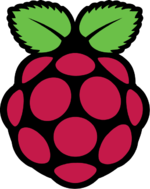Difference between revisions of "Raspberry Pi"
| (4 intermediate revisions by 2 users not shown) | |||
| Line 1: | Line 1: | ||
| + | [[File:Rpi_logo.png|none|150px]] | ||
| + | |||
Raspberry Pi are a series of small, low cost, low power computers. | Raspberry Pi are a series of small, low cost, low power computers. | ||
| − | Sugar can be run on a Raspberry Pi. | + | Sugar can be run on a Raspberry Pi. You will need a display, keyboard and mouse. |
| + | |||
| + | As of August 2017, the best to use is Sugar on a Stick, as it has many activities and has regular security updates. Sugar on a Stick is a spin of Fedora. | ||
| + | |||
| + | Other methods are using Fedora, Debian and Ubuntu. | ||
| + | |||
| + | Developers may focus on either Fedora or Debian when setting up a development environment for Sugar on Raspberry Pi, because Sugar development on generic computers is focused on those operating systems. | ||
| + | |||
| + | == How to use Sugar on a Stick (SOAS) on a Raspberry Pi == | ||
| + | |||
| + | - on another computer, visit [https://arm.fedoraproject.org arm.fedoraproject.org] and download the Sugar on a Stick image, | ||
| + | - write the image to a microSD card, using software such as Fedora Media Writer, Etcher.io, or the [https://fedoraproject.org/wiki/Architectures/ARM/Raspberry_Pi Fedora Raspberry Pi Documentation], or [https://unetbootin.github.io/ UNetBootin] | ||
| + | - insert the microSD card into the Raspberry Pi, and turn it on, | ||
| + | - answer the post-install questions; time zone, root password, and add a user, | ||
| + | - at the login prompt log in with the added user, and Sugar will start. | ||
| + | |||
| + | === Security Warning === | ||
| + | |||
| + | Remote access is pre-enabled through SSH, for both root and any user accounts. Risk can be reduced by choosing strong passwords in the post-install setup questions. Can be fixed after install with Terminal command; | ||
| + | <nowiki> | ||
| + | sudo chkconfig sshd off | ||
| + | </nowiki> | ||
| + | |||
| + | === Security Updates === | ||
| + | |||
| + | Security updates can be downloaded with Terminal command; | ||
| + | <nowiki> | ||
| + | sudo dnf update | ||
| + | </nowiki> | ||
| + | |||
| + | === Fedora Media Writer === | ||
| − | + | How to write an image to microSD card using [https://github.com/MartinBriza/MediaWriter/releases Fedora Media Writer (FMW)], which is available for Mac OS X, Microsoft Windows, Fedora Linux, and Ubuntu Linux as a flatpak, or from source. | |
| − | + | - download the raw.xz file | |
| + | - select and extract, result is a raw file | ||
| + | - start Fedora Media Writer | ||
| + | - select "Custom" | ||
| + | - select the raw file | ||
| + | - Insert microSD in Mini Card Reader and insert in USB port | ||
| + | - Choose rpi3 from drop-down in Fedora Media Writer | ||
| + | - Write microSD | ||
| − | |||
| − | |||
| − | |||
| − | |||
| − | + | See also for updated resources: | |
| + | * https://github.com/sugarlabs/sugar/blob/master/docs/rpi.md | ||
| + | * https://github.com/sugarlabs/sugar/blob/master/docs/rpi-soas.md | ||
Latest revision as of 16:22, 17 December 2019
Raspberry Pi are a series of small, low cost, low power computers.
Sugar can be run on a Raspberry Pi. You will need a display, keyboard and mouse.
As of August 2017, the best to use is Sugar on a Stick, as it has many activities and has regular security updates. Sugar on a Stick is a spin of Fedora.
Other methods are using Fedora, Debian and Ubuntu.
Developers may focus on either Fedora or Debian when setting up a development environment for Sugar on Raspberry Pi, because Sugar development on generic computers is focused on those operating systems.
How to use Sugar on a Stick (SOAS) on a Raspberry Pi
- on another computer, visit arm.fedoraproject.org and download the Sugar on a Stick image, - write the image to a microSD card, using software such as Fedora Media Writer, Etcher.io, or the Fedora Raspberry Pi Documentation, or UNetBootin - insert the microSD card into the Raspberry Pi, and turn it on, - answer the post-install questions; time zone, root password, and add a user, - at the login prompt log in with the added user, and Sugar will start.
Security Warning
Remote access is pre-enabled through SSH, for both root and any user accounts. Risk can be reduced by choosing strong passwords in the post-install setup questions. Can be fixed after install with Terminal command;
sudo chkconfig sshd off
Security Updates
Security updates can be downloaded with Terminal command;
sudo dnf update
Fedora Media Writer
How to write an image to microSD card using Fedora Media Writer (FMW), which is available for Mac OS X, Microsoft Windows, Fedora Linux, and Ubuntu Linux as a flatpak, or from source.
- download the raw.xz file - select and extract, result is a raw file - start Fedora Media Writer - select "Custom" - select the raw file - Insert microSD in Mini Card Reader and insert in USB port - Choose rpi3 from drop-down in Fedora Media Writer - Write microSD
See also for updated resources:
